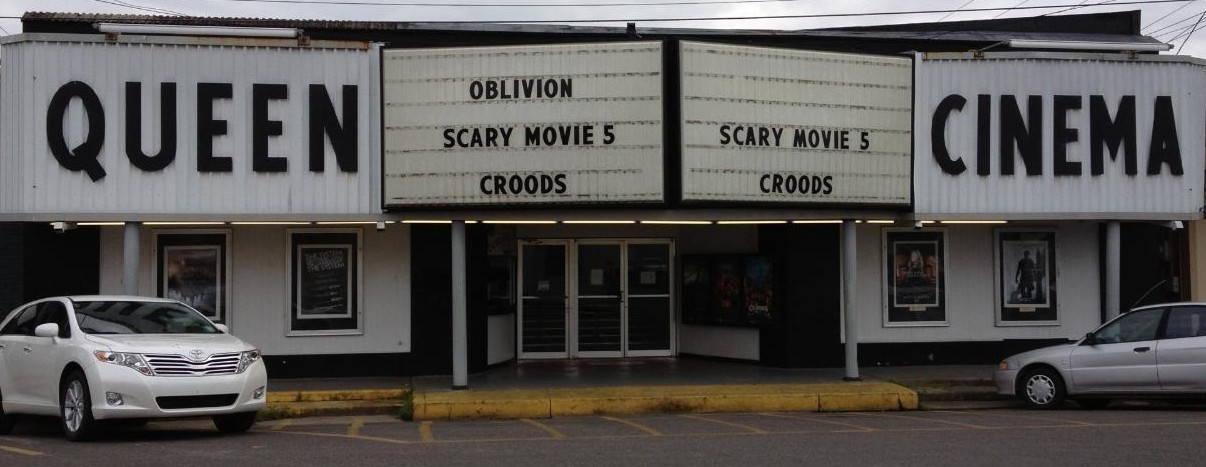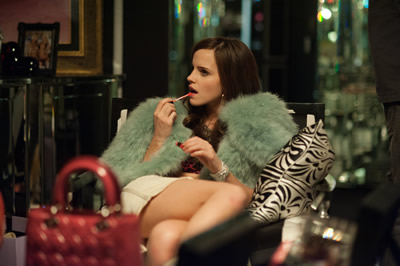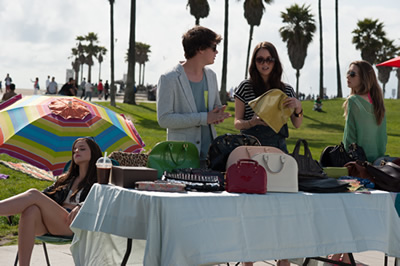In 1960, the English critic V.F. Perkins has this to say about the films of Nicholas Ray: “… the quality of the films is not literary, since it owes little to the original script, but cinematic; it results from the subjection of a frequently banal narrative to an idiosyncratic mise-en-scene.” Mise-en-scene is, put simply, the arrangement of décor, props and actors within a lighting scheme, all shaped by the camera through lens selection and aspect ratio. Although frequently associated with long takes, it is just as important to techniques which rely on quick cutting. As vital as it is, mise-en-scene is the most neglected facet of American filmmaking.
Not by Sofia Coppola, though, and certainly not with The Bling Ring. The fifth feature by the 43-year-old writer-director, it is her most stylistically assured effort to date. Like her first four movies, it reflects her fascination with untried, inexperienced, naïve, and/or vapid people (mostly young, mostly female) who stumble into a situation too complex to handle. But their stories don’t emanate from plot, but from the tensions between the characters.
Coppola bases the movie on an article by Nancy Jo Sales that appeared in Vanity Fair. Sales wrote about a group of (mostly) teenagers from the toney Los Angeles suburb of Calabasas who, in 2008-2009, broke into the houses of numerous celebrities (Paris Hilton, Megan Fox, and Lindsay Lohan among them) and made off with cash, jewelry, and lots of clothes, shoes, and accessories. Coppola changes names, alters family relationships, and so frees herself from the chains of mere journalism, but the film generally reflects the thefts and, ultimately, arrests and convictions as they happened.
The Bling Ring, though, is about a group of kids who mistake an affected amorality as a paradisiacal state of mind, an imaginary, adult-free Eden from which they’re expelled after repeated bites of the apple. It’s about the unconsciousness of sin.
The very first shot hints at what is to come. Aside from the upper right corner, the frame is black. In that snug corner, a pool of yellow light illuminates some teens climbing over what is clearly the a security camera, a judgmental sentinel gazing impassively from above.
Coppola goes on to depict the assemblage of the gang, at first within frames that take in wide-open backgrounds, even in interiors. As the teens begin to bond, those background spaces shrink in scale so that that they provide a comfortable teen-size, whether they’re in their bedrooms, outdoors, or in the homes of their victims. Finally, when the police close in and the kids begin to turn on one another, Coppola alternates between medium long shots that emphasize the distance and discomfort between the characters with close-ups the emphasize their isolation.
Coppola also fills and empties images with, well, stuff. During the actual break-in scenes, she jams the frame with celebrity possessions, the detritus of fashion. But when the adolescent thieves get home, they have to hide their booty away from prying adult eyes. Their bedrooms, the center of their lives, remain empty. Even the expensive, large homes their parents bought and maintain are often comprised of nothing but large, empty, colorless spaces. The decor emphasizes a free-floating, unanchored existence.
Some viewers have mistaken the vacuity of the characters for a lack of intelligence in the movie. But The Bling Ring is a densely rich film, another persuasive affirmation from Coppola that emotional and moral crises can happen even to the people least intellectually prepared to deal with them.
–Henry Sheehan


